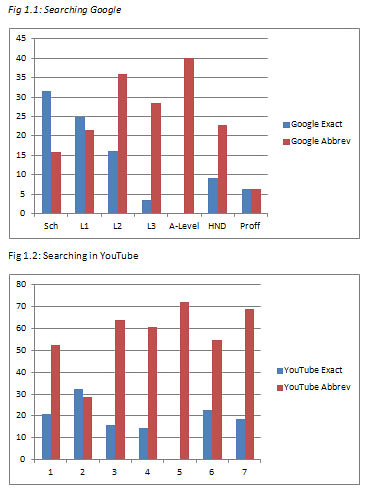IMAGE
Information Seeking Activities – First Aid Video Task
Introduction
The whole information seeking activity was introduced and participants were encouraged to name all of the resources available to them in a study centre. This introduction made them aware they had access to books, journals, newspapers, computers and the study centre team for guidance if they needed it.
The subject of finding a good and credible video to demonstrate first aid was an interesting idea. There was an assumption that learners would turn only to YouTube or Google to gain a video without searching other first aid related sources such as St Johns ambulance, NHS sites, The Red Cross or other similar public services sites. We were keen to see if any turned to the subject area of ‘first aid’ or just turned to Google and YouTube, including copy and paste of the question.
Results
The activity offered some interesting results
The Question:
Task: Find a video demonstration advising on first aid at a car accident scene
For This study has highlighted an interesting insight into searching techniques. There is no significant pattern that search techniques are different through the ages and stages of learning but what is apparent are subtle differences in the way the question is asked. There seems to be more direct copy and paste of questions into Google by the younger learners than that of those from Level 2 or above, as indicated in Fig 1.1.
In Fig 1.3 it shows those who cross checked their answers or used the more formal agencies associated with the subject of first aid. Most answers given were from YouTube apart from those shown in Fig 1.3. With the exception of a-level results those who sourced a video from formal agencies was between 3% - 9% indicating a reliance on YouTube or other video platforms to find an answer. The amount of cross checking or sampling various sources or videos before settling on an appropriate answer was between 3% – 16% and primarily done at level 3 and a-level or beyond, yet another indication for the need or reliance on an immediate answer.
A very interesting finding as indicated by Fig 1.1. and Fig 2.2 are the different search techniques adopted for searching in Google compared to searching in YouTube. In YouTube there is significantly more abbreviating of questions to that of when searching in Google. The use of abbreviated terms rather than the direct copy of the question is up to 70% in YouTube whereas the abbreviating of terms for Google only got as high as 40% in the highest case. This is interesting as it indicates a possible awareness that YouTube is a different tool to that of Google. It indicates that users consider Google as a place to ask and answer questions whereas YouTube needs to be searched by topic than a question. This is interesting as it shows search techniques alter depending on what tool is being used.
Conclusion
This was a fascinating study that has indicated there are varying techniques for searching online dependant on the type of site being searched. It has highlighted that users make a distinction between how they search in Google for answers and how they search by topic in a video channel. This identifies that they are able to interpret questions to search online and many looked through a range of videos to see which could be most relevant. Yet they did not do this in Google and seemed more reliant that Google could answer the question immediately for them. The use of YouTube indicated that students do actually possess interpretive and evaluative skills to sift through and seek out a ‘best’ answer. It appears they can only do this when they have to in circumstances when the technology does do not it for them.
This study has also demonstrated that there is very little use of cross checking answers against a range of sources but a strong reliance on a one place search in places such as Google and YouTube. There were a very small number who visited the more formal agencies to source a first aid video.

